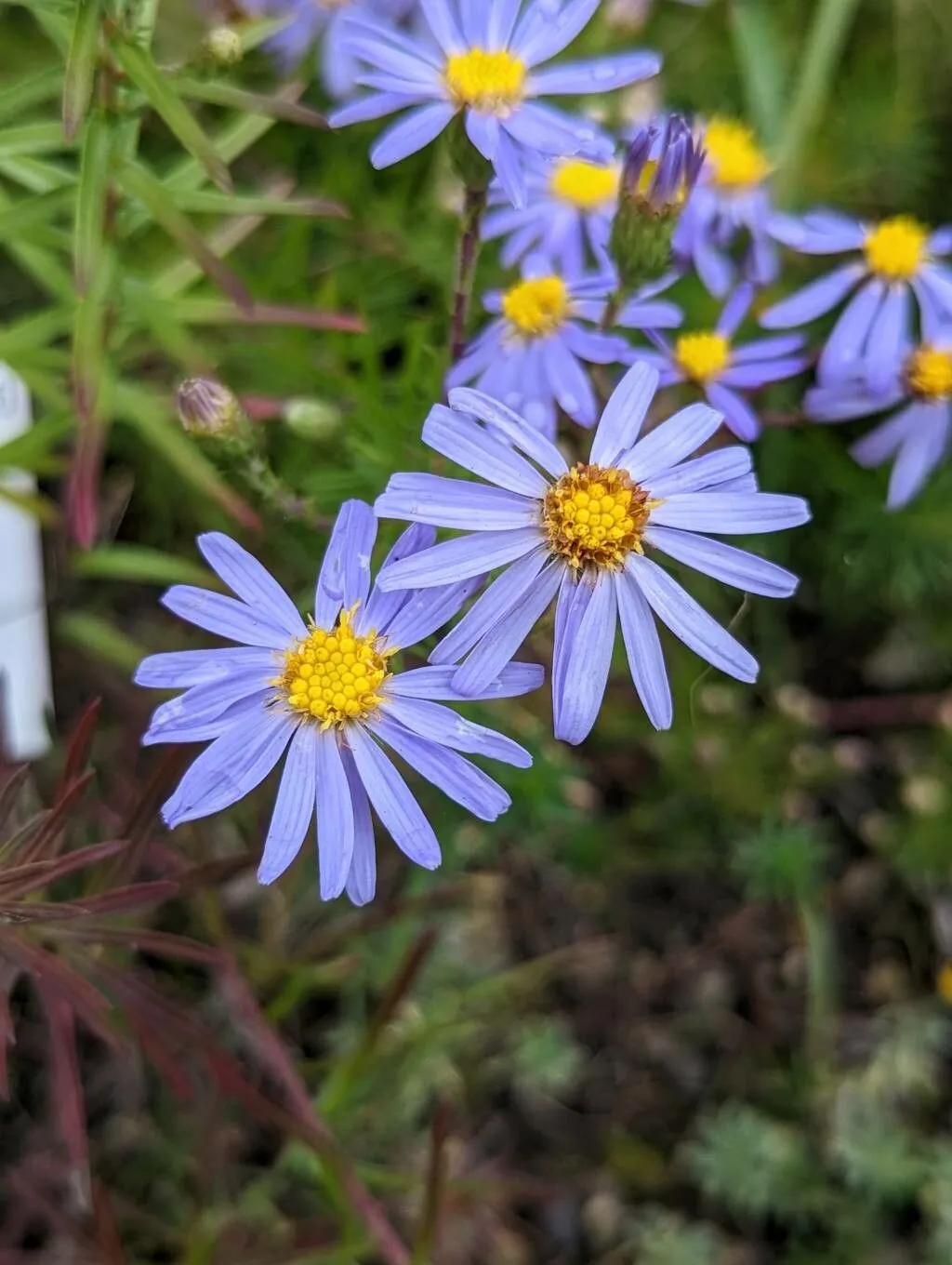
Author: (L.) Greene
Bibliography: Pittonia 3(17): 245 (1897)
Year: 1897
Status: accepted
Rank: species
Genus: Ionactis
Vegetable: False
Observations: E. Canada to U.S.A.
Savory-leaf aster, scientifically known as Ionactis linariifolia, is a captivating and resilient species belonging to the family Asteraceae. This floriferous plant has been notable for its ecological adaptability and striking appearance, contributing significantly to the biodiversity of North America.
First described by botanist Edward Lee Greene in 1897, this species has been thoroughly documented in his work, Pittonia (volume 3, issue 17, page 245). Greene’s taxonomic classification has since provided a foundation for understanding this plant’s distinct characteristics and its role within its native habitats.
Savory-leaf aster has a particularly expansive range, spanning from eastern Canada through various regions of the United States. The plant thrives in diverse environments, including open woodlands, prairies, and rocky outcrops, showcasing a commendable adaptability to different soil types and climatic conditions. This widespread distribution is a testament to its hardiness and ecological versatility.
Visually, Ionactis linariifolia is distinguished by its narrow, linear leaves, which resemble those of the savory herb, hence its common name. The foliage contributes to its botanical elegance, accentuating its picturesque clusters of pale purple to lavender blooms. Each blossom comprises delicate ray florets encircling a vibrant yellow disc, creating a striking contrast that attracts various pollinators, including bees and butterflies. This symbiotic relationship highlights the aster’s integral role in supporting local ecosystems.
In cultivation, savory-leaf aster is praised for its low-maintenance nature and drought resistance, making it a favored choice for gardeners and landscapers aiming to enhance biodiversity with native flora. Its blooming period, typically extending from late summer to fall, adds seasonal interest to gardens and natural settings alike.
Overall, the savory-leaf aster stands out not just for its aesthetic appeal but also for its ecological significance. As part of the rich tapestry of the Asteraceae family, Ionactis linariifolia continues to be a subject of botanical interest and environmental importance in eastern North America.
Eng: flax-leaf aster, flaxleaf whitetop aster, savory-leaf aster, stiff aster, stiff-leaf aster, flax-leaved aster, flax-leaved ankle-aster, flax-leaved whitetop aster, savory-leaved aster, spruce aster
Swe: smalaster
Fra: aster à feuilles de linaire
En: Savory-leaf aster, Stiff aster, Stiff-leaf aster, Flax-leaf aster, Flaxleaf whitetop aster, Flax-leaved aster, Flax-leaved ankle-aster, Flax-leaved whitetop aster, Savory-leaved aster, Spruce aster
Et: Käokannuselehine jäikaster
Fr: Aster à feuilles de linaire
Sv: Smalaster
Taken Jan 1, 1900 by EOL − John Hilty (cc-by-nc)
Taken Jan 1, 1900 by EOL − Scott Namestnik (cc-by-nc-sa)
Taken Jan 1, 1900 by EOL − John Hilty (cc-by-nc)
Taken Nov 29, 2012 by EOL − Kelly O’Donnell (cc-by-nc-sa)
Taken Sep 30, 2022 by manuseitz (cc-by-sa)
Taken Sep 30, 2022 by manuseitz (cc-by-sa)
Taken Sep 30, 2022 by manuseitz (cc-by-sa)
Taken Sep 30, 2022 by manuseitz (cc-by-sa)
Family: Myrtaceae Author: (F.Muell.) K.D.Hill & L.A.S.Johnson Bibliography: Telopea 6: 402 (1995) Year: 1995 Status:…
Family: Rubiaceae Author: Pierre ex A.Froehner Bibliography: Notizbl. Bot. Gart. Berlin-Dahlem 1: 237 (1897) Year:…
Family: Sapindaceae Author: Koidz. Bibliography: J. Coll. Sci. Imp. Univ. Tokyo 32(1): 38 (1911) Year:…
Family: Asteraceae Author: A.Gray Bibliography: Pacif. Railr. Rep.: 107 (1857) Year: 1857 Status: accepted Rank:…
Family: Fabaceae Author: Medik. Bibliography: Vorles. Churpfälz. Phys.-Ökon. Ges. 2: 398 (1787) Year: 1787 Status:…
Family: Aspleniaceae Author: (Cav.) Alston Bibliography: Bull. Misc. Inform. Kew 1932: 309 (1932) Year: 1932…